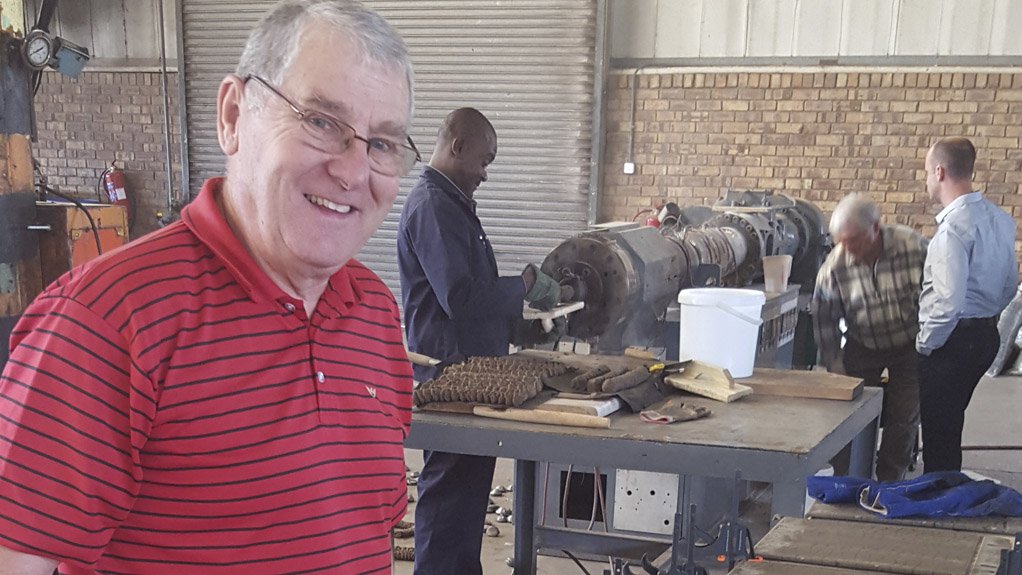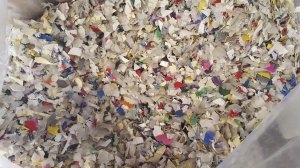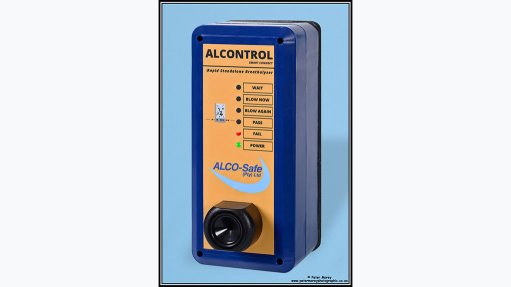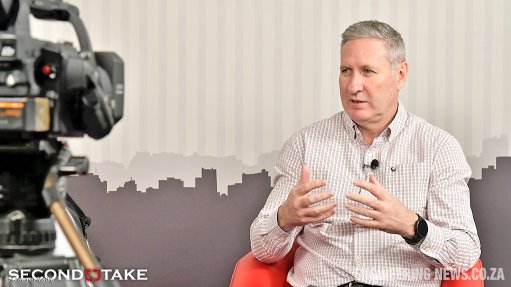Sustainable roof tile set to revolutionise market



BILL BOWMAN Thevia can currently produce about 20 000 tiles a month on an experimental line at the pilot plant
WASTE MATERIAL Thevia tiles are 70% lighter than traditional concrete, slate or clay tiles
Pretoria-based start-up company Thevia has introduced a sustainably manufactured roof tile that should “revolutionise” the roof tile market, owing to its unique design, says Thevia financial director MartinAckermann.
The tiles, each weighing 1.3 kg, are 70% lighter than traditional concrete, slate or clay tiles, and are manufactured from 100% waste material, recycled plastic and discarded fines from a crushing process.
Ackermann states that the strength and weight reduction of Thevia’s tiles could become a global game changer. The product is already been selected as one of South Africa’s 26 semifinalists in the world's largest clean technology business accelerator, the CleanTech Open competition.
“We submitted a patent application for our disruptive green technology and revolutionary top and bottom interlocking roof tile design. We have proven the moulding process at our pilot plant near Bronkhorstspruit, Gauteng, and our engineered tiles look like conventional tiles, while being twice as strong, half as thick, and about a third of the weight,” he states.
According to Thevia technical director Bill Bowman, the unique selling point of the interlocking roof tiles remains the fact that they are not brittle, like conventional tiles. Bowman demonstrated this by throwing a tile in frisbeelike fashion across the room. “We have virtually zero breakage,” he says.
“The main difference is that, with the Thevia tile strength, we can reduce the number of tiles to about 8.8 for every square metre. Because of the tiles being so light, we are planning on making ‘double-sized’ tiles, each still half the weight of a normal concrete tile, but which would require only 4.4 tiles for every square metre. This will decrease construction times and the substantial weight difference lessens the strength requirement of the building and roof structure.”
Bowman notes that, while competitive conventional cement or clay tile manufacturers might require between 10 and 15 tiles for every square metre, weighing about 50 kg, Thevia tiles weigh about 11.4 kg/m2.
Ackermann adds: “Regulation dictates that ordinary pine trusses should be spaced at increments of approximately 76 cm to support the load of a 500 N/m2 roof . . . with Thevia tiles, we can increase the increments to 90 cm. If steel trusses are used, we can extend the increments to about 1.5 m.”
The company also states that the bearing strength of the tile is much greater than that of competitors’ flat tiles, which tend to snap at between 700 Nm and 800 Nm.
“We have had our tiles tested at the Council for Scientific and Industrial Research, in Pretoria. Thevia tiles retained a bearing strength of between 1 400 Nm and 1 600 Nm of downward force.”
Ackermann adds that, from a health and safety perspective, the Thevia tile also improves worker safety conditions. “The lighter tiles reduce strain on the workers, which reduces mishaps and breakage. The tile’s recycled plastic base creates shavings when cut with an angle grinder. These shavings drop to the floor and are easily containable, as opposed to the dust and breathing hazard created when cutting concrete tiles. Further, Thevia tiles won’t shatter, as often happens when cutting concrete tiles,” he states.
Factory Process
Bowman notes that, while the raw material is waste, the company ensures strict process control to maintain product quality standards.
Bowman notes that, the correct mix ratio enables the tile to retain its lightweight performance characteristics. A cocktail of additives is also added to the mix. The tiles are then compression-moulded and left for 24 hours.
The plant design is based on that of automotive operations in order to ensure that the cost of production per tile remains as low as possible.
The company can currently produce about 20 000 tiles a month on an experimental line at the pilot plant, but plans to increase production tenfold with the setup of its first commercial line. Ackermann believes that the production process will enable the company to employ 80 people.
The company is in the final stages of securing financing for the first of the three complete production lines.
“The environmental angle is significant: one commercial line is expected to convert 100 t of waste a week. We are planning to build three,” concludes Ackermann.
Article Enquiry
Email Article
Save Article
Feedback
To advertise email advertising@creamermedia.co.za or click here
Comments
Press Office
Announcements
What's On
Subscribe to improve your user experience...
Option 1 (equivalent of R125 a month):
Receive a weekly copy of Creamer Media's Engineering News & Mining Weekly magazine
(print copy for those in South Africa and e-magazine for those outside of South Africa)
Receive daily email newsletters
Access to full search results
Access archive of magazine back copies
Access to Projects in Progress
Access to ONE Research Report of your choice in PDF format
Option 2 (equivalent of R375 a month):
All benefits from Option 1
PLUS
Access to Creamer Media's Research Channel Africa for ALL Research Reports, in PDF format, on various industrial and mining sectors
including Electricity; Water; Energy Transition; Hydrogen; Roads, Rail and Ports; Coal; Gold; Platinum; Battery Metals; etc.
Already a subscriber?
Forgotten your password?
Receive weekly copy of Creamer Media's Engineering News & Mining Weekly magazine (print copy for those in South Africa and e-magazine for those outside of South Africa)
➕
Recieve daily email newsletters
➕
Access to full search results
➕
Access archive of magazine back copies
➕
Access to Projects in Progress
➕
Access to ONE Research Report of your choice in PDF format
RESEARCH CHANNEL AFRICA
R4500 (equivalent of R375 a month)
SUBSCRIBEAll benefits from Option 1
➕
Access to Creamer Media's Research Channel Africa for ALL Research Reports on various industrial and mining sectors, in PDF format, including on:
Electricity
➕
Water
➕
Energy Transition
➕
Hydrogen
➕
Roads, Rail and Ports
➕
Coal
➕
Gold
➕
Platinum
➕
Battery Metals
➕
etc.
Receive all benefits from Option 1 or Option 2 delivered to numerous people at your company
➕
Multiple User names and Passwords for simultaneous log-ins
➕
Intranet integration access to all in your organisation



















